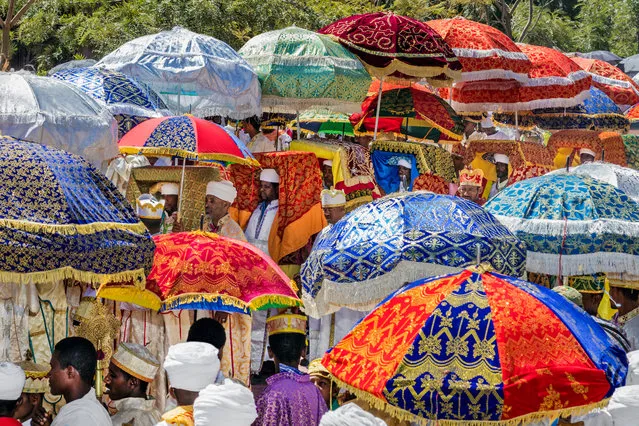
As one of the first countries to adopt Christianity, Ethiopia has a legacy of churches and monasteries, built on hilltops or hewn out of cliff faces, as well as vibrant traditions of worship. These are celebrated in a lavish book, “Ethiopia: The Living Churches of an Ancient Kingdom”. Here: Ethiopia adopted Christianity in the early fourth century. Today, the Timqat festival (Epiphany) is the most important of Ethiopia’s nine major Christian feasts, taking place on 19 January to commemorate Christ’s baptism. In this celebration in the northern town of Lalibela, the tabots, or tablets of law, are seen being taken from various churches – wrapped in rich cloth and carried on the heads of priests – to a place of blessing. (Photo by Ethiopia – The Living Churches of an Ancient Kingdom/The American University in Cairo Press/The Guardian)
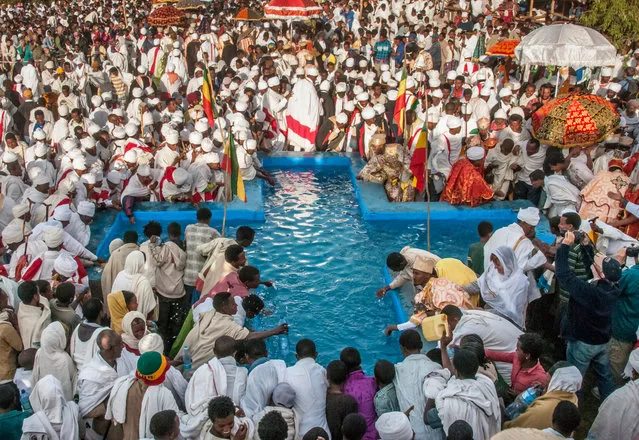
On the following morning, crowds gather round a cross-shaped baptismal pool that represents the River Jordan, where Jesus was baptised by John the Baptist. (Photo by Ethiopia – The Living Churches of an Ancient Kingdom/The American University in Cairo Press/The Guardian)
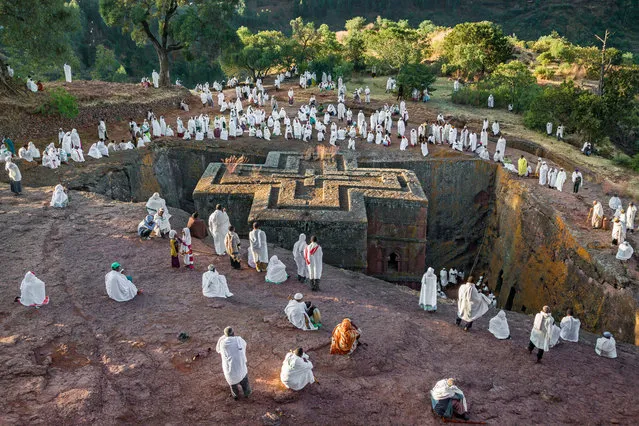
Early-morning worshippers head for the most skilfully executed and best-preserved of the Lalibela churches, Bete Giyorgis (House of St George). It is chronologically probably the last of the churches, and legend has it that it was excavated after St George appeared before King Lalibela and claimed he had been forgotten. Its plan is the shape of a Greek cross, with each arm of equal length, a motif echoed on the roof, which is engraved with a triple Greek cross. (Photo by Ethiopia – The Living Churches of an Ancient Kingdom/The American University in Cairo Press/The Guardian)
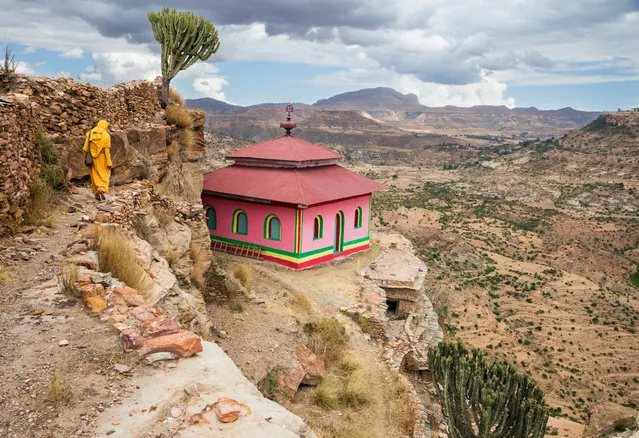
Debre Damo, a flat-topped mountain in northern Ethiopia, is one of the country’s most important centres of Christianity. This small, modern church is built in front of the grotto where Aragawi – one of the nine saints, or missionaries, who brought Christianity to Ethiopia – is said to have vanished. Saints were often attributed with disappearance, rather than death. The skeletal remains of monks, protruding from shrouds, can be seen in alcoves in the grotto walls. (Photo by Ethiopia – The Living Churches of an Ancient Kingdom/The American University in Cairo Press/The Guardian)
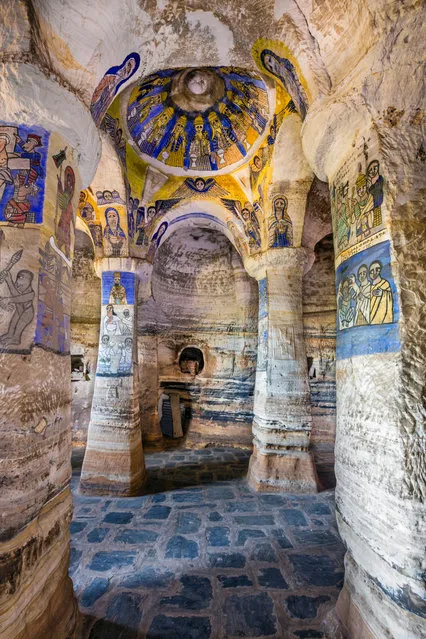
Getting to Abuna Gebre Mikael church in the Gheralta mountains involves jumping from one slab of rock to another in a mountain gully. The interior has two aisles and a central nave and its intriguing Gondarine frescoes are late 18th- or early 19th-century. Gondarine artists were taught by the Jesuits to introduce descriptive narrative scenes, noses, and facial expression. The palette of colours here adds stunning blues, purple, orange and grey to traditional browns and yellows. (Photo by Ethiopia – The Living Churches of an Ancient Kingdom/The American University in Cairo Press/The Guardian)
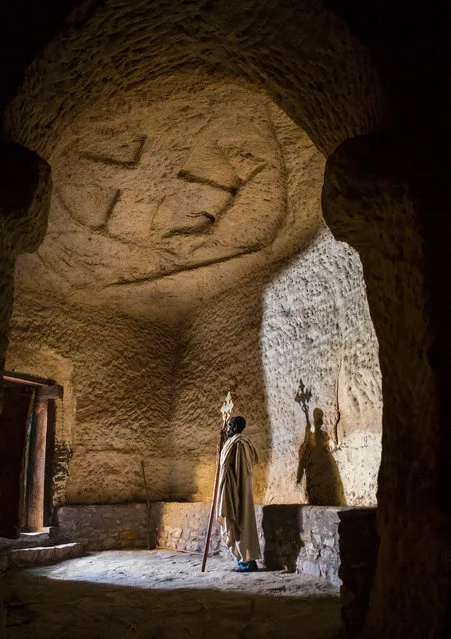
Yohannes Maequddi church. Also in the Gheralta mountains, this is the last of the great painted basilicas of Tigray. It is carved out of an outcrop of white sandstone atop a mountain that rises 230 metres from the valley floor. The first part of the vestibule, which is divided in two, has a shallow dome engraved with a cross. Inside, colourful frescoes of biblical scenes, portraits of saints, and geometrical designs cover not only the walls but the ceiling, too. (Photo by Ethiopia – The Living Churches of an Ancient Kingdom/The American University in Cairo Press/The Guardian)
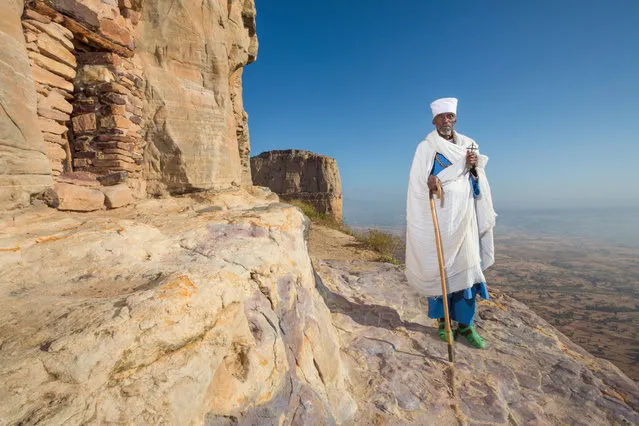
Daniel Korkor, atop a vertiginous 300-metre precipice, enjoys stunning views, even by Gheralta standards. Its two small chambers are said to have served as a monk’s retreat. Only the larger of the two is decorated. According to one of the monks, it once had a tabot dedicated to 13th-century abbot Abba Daniel, which now resides in Maryam Korkor. A niche in the wall opposite the entrance is where the hermit or monk would have sat. From this vantage point, he could see across the plains, where he came from, and the sky, where he was going. (Photo by Ethiopia – The Living Churches of an Ancient Kingdom/The American University in Cairo Press/The Guardian)
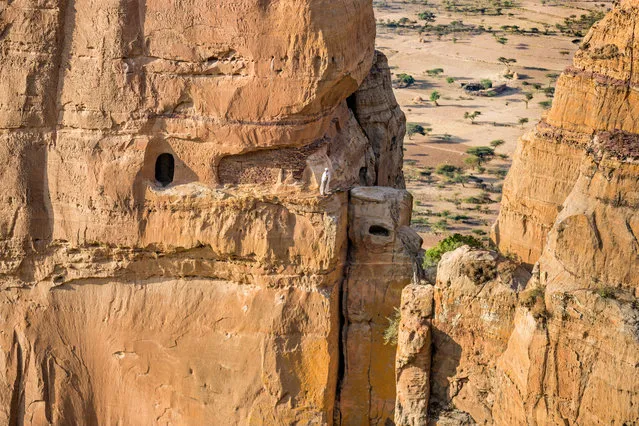
Abuna Yemata, one of the nine saints, chose as a hermitage the pinnacle of Guh in the Gheralta range, pointing like a finger towards heaven, and removed from the noise of life. He later founded a church hewn into the rock face. The entrance is reached by a steep and hazardous ascent with hand- and footholds in the rock. In this image, the entrance to the church can be seen on the right, about a third of the way up the pinnacle. (Photo by Ethiopia – The Living Churches of an Ancient Kingdom/The American University in Cairo Press/The Guardian)
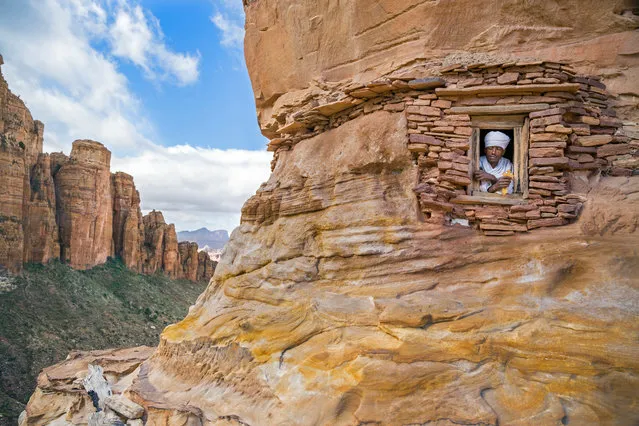
A priest is seen looking out of Abuna Yemata church’s only window. Priests cheerfully tell visitors that pregnant women, babies and old people attend Sunday services and no one has fallen off. (Photo by Ethiopia – The Living Churches of an Ancient Kingdom/The American University in Cairo Press/The Guardian)
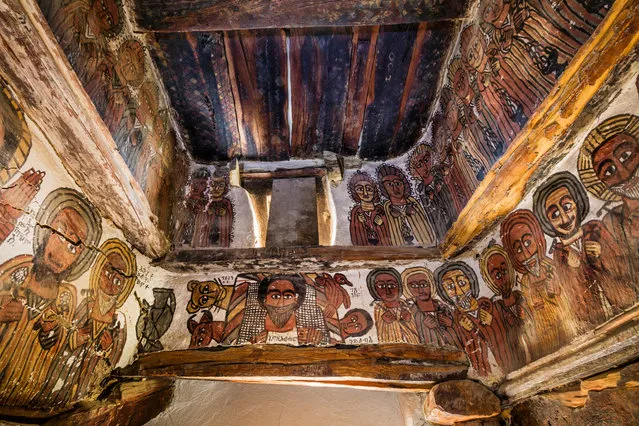
Petros and Paulos, Teka Tesfai. This church, like so many in the Gheralta range, is in a spectacular location: on a narrow ledge under an overhanging cliff. Once the only access was a 15-metre climb up a vertical rock face using foot- and hand-holds; now there’s a rickety ladder. The church is a built structure of wood, stone and mortar, but the sanctuary is hewn into the rock. The walls have some lovely late 17th-century frescoes in muted colours in the 15th-century style found at Abuna Yemata in Guh and Yohannes Maequddi. (Photo by Ethiopia – The Living Churches of an Ancient Kingdom/The American University in Cairo Press/The Guardian)
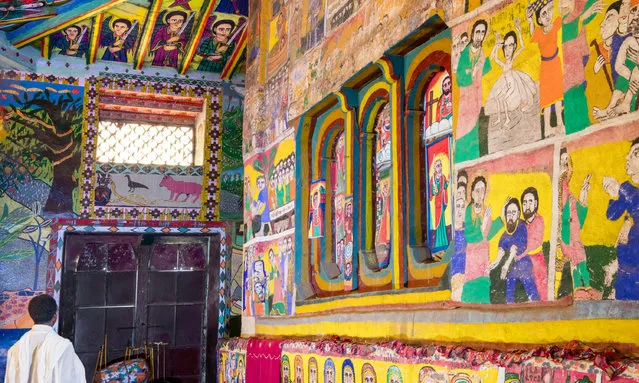
Arbatu Entsessa, Aksum. This 1960s stone church is dedicated to the Four Beasts of the Apocalypse, but also the Tetramorph, which is especially venerated in Ethiopia, and represents the four evangelists. Matthew has a human face, Mark is a lion, Luke is a sacrificial ox, and John is an eagle. The walls and ceiling are covered with liturgical pictures originally done in warm earth tones but since repainted using a riot of primary colours. (Photo by Ethiopia – The Living Churches of an Ancient Kingdom/The American University in Cairo Press/The Guardian)
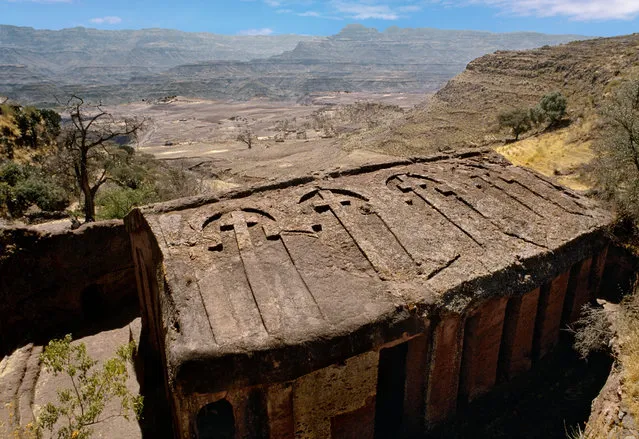
Genneta Maryam, Lasta. Hewn during the reign of King Yikuno Amlak (1270–85), this church has some of the oldest frescoes in Ethiopia, thought to date to the late 13th century. Its prolific art includes Ethiopia’s oldest surviving Old Testament scenes and images of saints, as well as New Testament themes. This photograph shows the church’s saddleback roof, decorated with a frieze of four low-relief blind arches framing a plain cross. (Photo by Ethiopia – The Living Churches of an Ancient Kingdom/The American University in Cairo Press/The Guardian)
15 Dec 2017 06:19:00,
post received
0 comments
